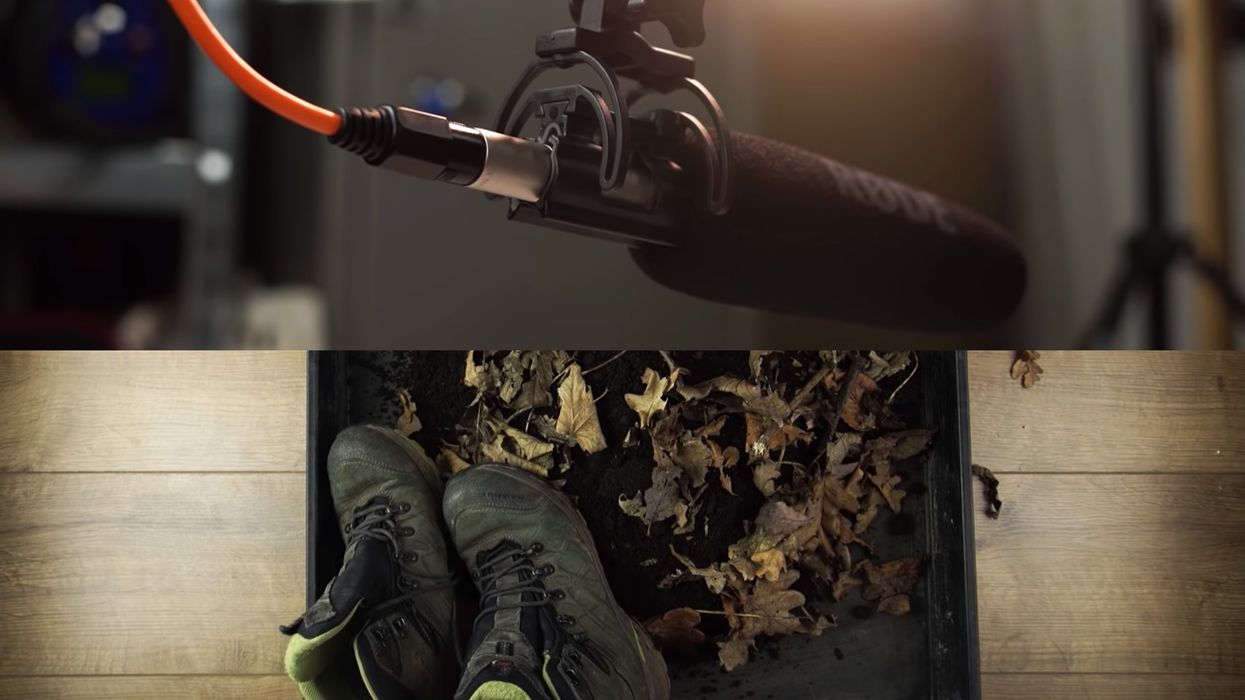A Step-by-Step Guide on Recording Better Foley Footsteps
Need to record some foley footsteps? This tutorial will get you off on the right foot.

When it comes to foley, footsteps are certainly one of the most essential sounds you're going to need to have on-hand.
You can go the stock route and buy some sound effects from your favorite stock websites...or, you can do the more fun thing and create your own foley.
The team over at The Film Look has put together a video that offers up a bunch of tips for making your foley recording session a success, including how to place your microphones, what kinds of materials you'll need, as well as syncing your sound effects once you head into post. Check it out below:
The Film Look goes over a bunch of great tips in the video, so here's a quick rundown of all of the stuff they talked about.
How to Prep for Your Foley Footsteps
You might be eager to jump right into recording foley, but there are definitely some things you'll want to take care of beforehand.
- Watch your footage and identify the sound source and its properties.
- Get the essentials: a garden tray, shoes, dirt, rocks, leaves, sticks, or whatever materials you think will replicate the sound source.
- Put on "soundproof" clothing, like sweatpants, so the only sounds you make are the ones you're using for foley.
- Take off jewelry, watches, and other accessories.
- Tape down any zippers or laces so they don't make noise while you're recording.
- Eat before you record to avoid picking up any rumbling stomach sounds.
Recording Your Foley Footsteps
Okay, you've prepped enough. Now you're ready to record. Here's what you'll need to know.
- Place your microphone close enough to your subject to capture detail but not too close that you pick up too much bass or isolate one particular area. (1 foot might work well.)
- Mount your microphone on a mic stand with a shock mount to avoid picking up any vibrations from the floor.
- Put some foam under your foley pit to dampen any noise.
- Test your footsteps and adjust your levels so your recording hits at around -6dB.
- Before you hit record, make sure you say into the mic details of your recording, including footwear, surface, and project name.
- Do a few practice runs of your foley. Watch the original footage to make sure you're getting the timing and style right.
- Record singles. You don't need the original footage for this. Just perform a bunch of different kinds of steps and record 'em. The Film Look calls them "footstep b-roll" which is perfect.
What are some other helpful tips on recording foley footsteps? Let us know down in the comments.
Source: The Film Look













